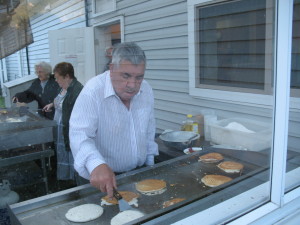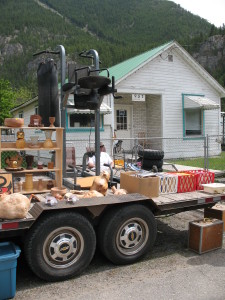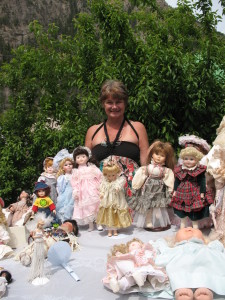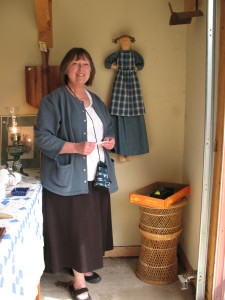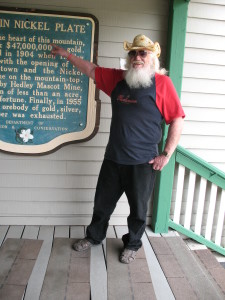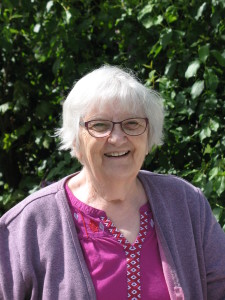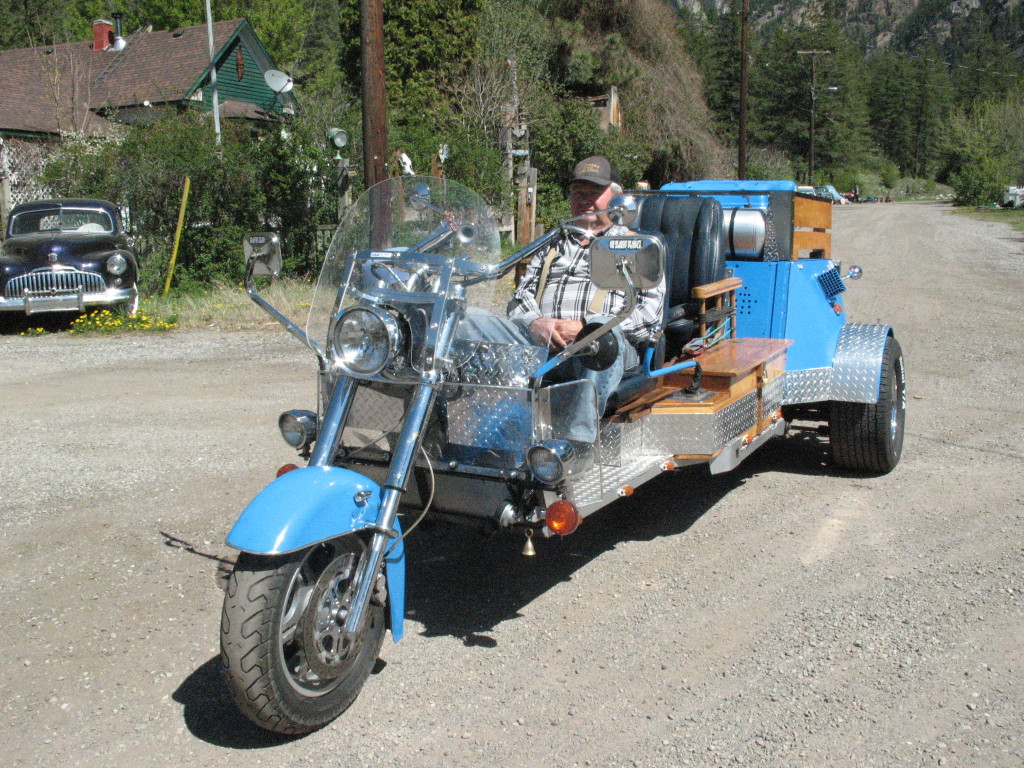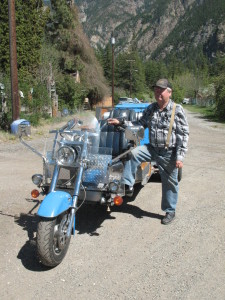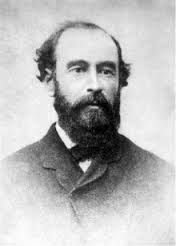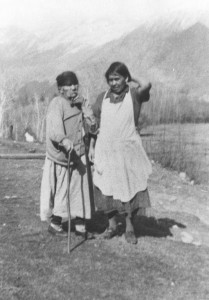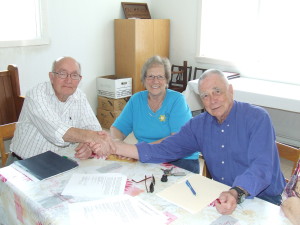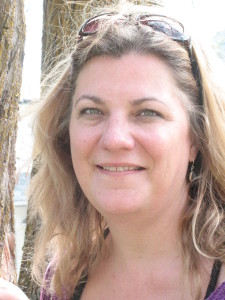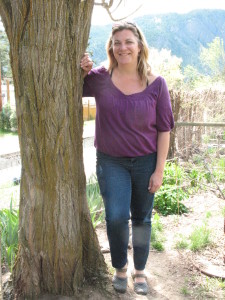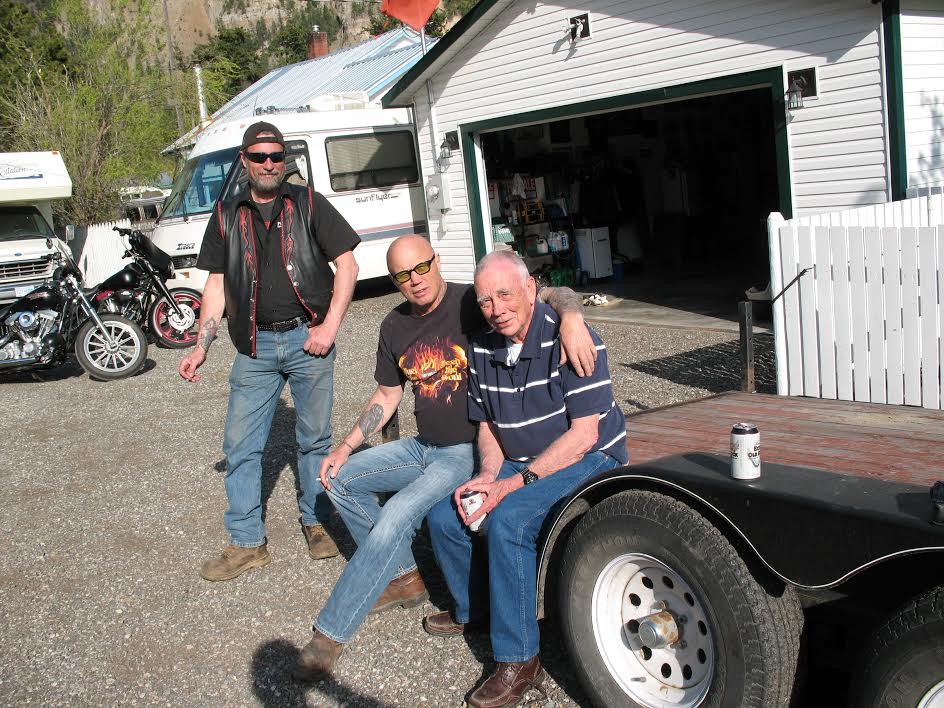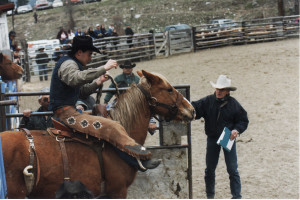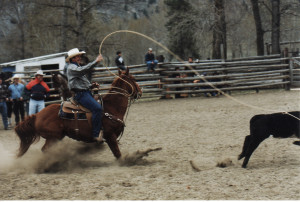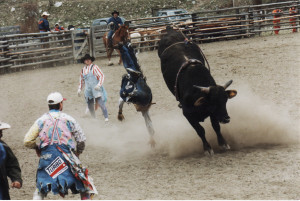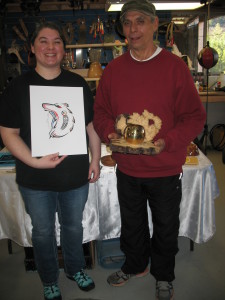This past weekend Hedley again enthusiastically welcomed a

contingent of bike polo players. When I showed up on Saturday to get a few photos, they were still on their lunch break. Reuben Williamson, who is not a member of the group and does not play, was at the grill serving up hamburgers and smokie hot dogs. Reuben has been in and out of Hedley for many years. For him it was a brief connection with the players.

Dasha, who has played Bike Polo for a number of years, told me “I do it for fitness and social reasons. And I enjoy playing.”
In an interview with Tara Bowie in the Keremeos Review, Shannon Frey talked about how the group selected Hedley for a retreat 2 years ago. “We were looking for a good location,” she said, “and, believe it or not, we started looking through Google Maps. We need a big surface like an outside ice rink or tennis court. We saw the rink in Hedley and were able to organize it last year. It was a lot of fun and the local people seemed to enjoy it. They were so happy to have us here and we were so happy to be here. It’s a great mesh.”
According to Community Club President, Rod Moncrieff, the group
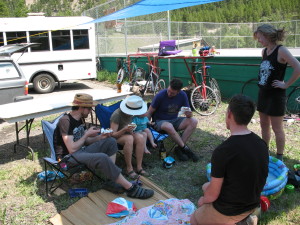
is a good fit for the town. They rent the rink, which helps the club. Also, they are well behaved and not a problem. They have plans to return next year and Rod will be happy to see them come back.
In the
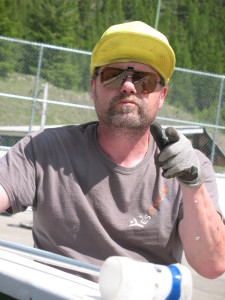
aforementioned article, Tara Bowie shed some light on the sport. “Each team has 3 players,” she wrote. “Sticks are very similar to croquet mallets. Players generally hold the mallet in their right hand and brake with their left. They use regular bikes with modifications. Bikes need to have a tight turn capacity with modified gears. Protectors need to be put in wheels so balls and mallets cannot go through and cause an accident.”
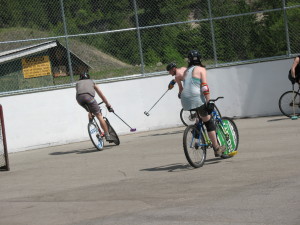
They weren’t playing a game while I was there but I saw several players out on the court with their bikes. My neighbour Russ watched a game and he said, “it gets a little rough. Some of the players have scrapes on their arms and legs.” Helmets, knee and elbow pads, and big gloves are required to protect the players.
The Hard Court Bike Polo Blog states “players are not allowed to put a foot down and touch the surface of the court. If that happens, the player must go to the side of the court and ring a bell before resuming play.”
The blog also says, “light contact is allowed. Trash talk is also permitted.”
According to Wikipedia, Richard J Mecredy, a retired champion cyclist in Ireland invented the sport in 1891. Originally it was played only on grass. It is now played in many countries, including France,
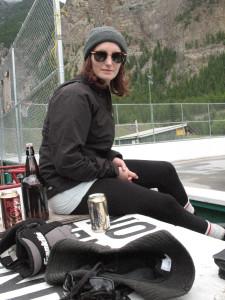
India, the USA, etc.
Without exception, the bike polo players are a lean bunch. I didn’t notice an ounce of extra fat on any of them. They are also congenial, totally willing to engage in conversation. A welcome influx of energy and enthusiasm into our little community.

